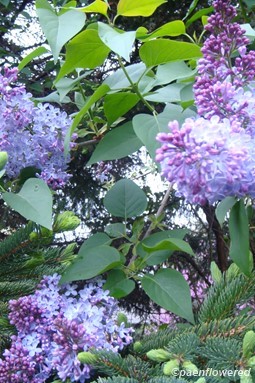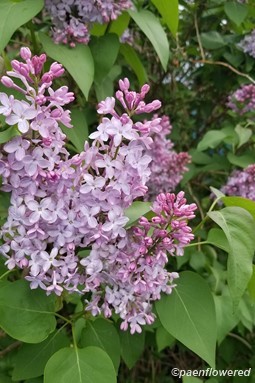Syringa vulgaris
A fragrant European tree that occasionally escapes cultivation
Syringa vulgaris common lilac
The common lilac is in the olive family and is native to hillsides in the Balkan area of Europe. Because it produces clusters of pleasantly scented flowers in the spring, it has long been cultivated in Europe and was introduced as a popular ornamental to the United States in the 18th century. The plant takes the form of a large deciduous shrub or multi-stemmed small tree. It grows up to 20-23 feet high. Stems can be up to 8 inches in diameter. The grey-brown bark can be furrowed or flaking on older stems.
The leaves are oval to heart-shaped. They are usually opposite on the stem but sometimes occur in whorls of 3. The base of the roots will produce suckers (secondary shoots) that result in new above-ground stems. In summer the leaves may be attacked by powdery mildew.
The flowers occur in clusters that are oval to pyramidal in shape. The 5-8 mm wide flowers have a tubular base and a 4-lobed apex. The flower color ranges from lilac to mauve and occasionally white. The flowers tend to be more abundant in alternate years unless the flowers are deadheaded (cut off) after they bloom and before seeds are set. The fruit is a dry smooth brown capsule that splits to release 2 winged seeds.
Habitat & Range
Frequently cultivated and often persisting on roadsides and abandoned home sites.
Present throughout the state.
Wetland code: Not classified
Phenology
Flowers in May.







Comments
Have you spotted this plant in your area? We'd love to hear about your experience! Share your comments or questions about the plant below. Comments are moderated before posting.